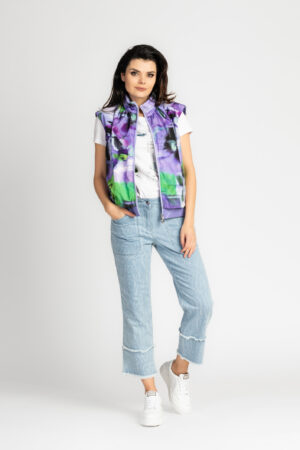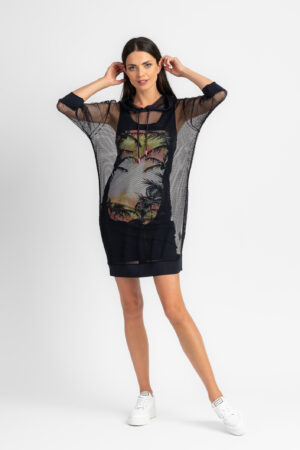A brief history of denim
Everyone wears them today. They are universal and perfectly emphasize the figure. They look great both in sports, everyday and very elegant styling. What are we talking about? Of course about JEANS! Get to know their story…
Where did the name “jeans” come from anyway?
The beginnings of the fabric from which jeans were made date back to the 18th century. The word “jeans” comes from the French words “Blue de Gênes”, which means “the blue of Genoa” – a city in Italy where sailor clothes were made. The etymology of the word “denim” is related to the French city of Nimes, where the first denim factory was established.
How has denim evolved over the years?
The biggest influence on the development of jeans was the gold rush in the United States in the mid-nineteenth century. Settlers and gold prospectors were looking for clothes that would be durable and resistant to abrasion and tearing. This is how the first denim pants, patented by Levi Strauss (in cooperation with Jacob Davis), were created, additionally reinforced with copper rivets to protect the material from damage. In the first version, the jeans had two pockets at the front and one at the back, over time, another one was added at the back, and a tiny pocket was sewn inside one of the front pockets, used to store a watch.
Company Levi Strauss & What. began to develop at an unimaginable pace. Over the years, a leather label appeared on the back pockets for brand recognition, depicting the trousers being stretched by two horses. In 1905, the iconic 501 model had its premiere, which is still popular today.
The 1930s was the time when jeans took Hollywood by storm thanks to westerns. And although initially jeans were considered a typically male garment, over time they began to be produced for women as well. It was around this time that Vogue magazine ran an ad showing women wearing close-fitting denim pants. In turn, during World War II, thanks to American soldiers on leave, they spread all over the world.
In the 1950s and 1960s, jeans became a symbol of youthful rebellion, mainly thanks to James Dean, and gained immense popularity among young people. In turn, the stars of world cinema, Marilyn Monroe and Brigitte Bardot promoted denim both on the glass screen and in everyday stylizations, showing even more clearly that it is not reserved only for men.
In the 1970s, middle-class people in the United States and Europe began to wear jeans, and specific denim models became symbols of various subcultures. For example, skinheads wore straight-leg jeans, punks loved skinny jeans, and hippies introduced flared jeans with colorful appliqués and embroidery.
Denim peaked in the 1980s. At that time, denim was the total look of any outfit. It was worn from head to toe. In addition to trousers, both men and women wore denim shirts, skirts and jackets.
Since the 1990s, denim pants have become a must-have item in every wardrobe, regardless of the age, gender or profession of the person who wears them. Available in a wide range of colors and styles, they adapt to any figure and can be found practically anywhere.






